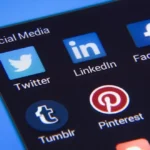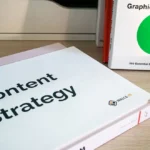Right, so I grabbed a virtual coffee with Lydia the other day, someone who’s been absolutely smashing it on LinkedIn when it comes to building a real brand community. I wanted to pick her brain on how she’s managed to not just amass a following, but actually convert that into new business. Her secret sauce? Creating a dedicated LinkedIn group, focusing on genuine engagement, and offering real value. Let me walk you through what I learned.
Laying the Foundation: Your Brand Community’s Home
First things first, Lydia stressed the importance of having a dedicated space. “Think of it like your own online club house,” she said. “A LinkedIn group specifically focused on your brand, your products, or the services you offer.” This isn’t just a page for broadcasting marketing fluff; it’s a space for fostering discussions, sharing industry insights, and providing exclusive content only available to members.
To kick this off properly, think about who you want to attract. What are their pain points? What are they interested in? Your group’s name and description should clearly signal to these individuals that they’ll find value here. Consider something like ‘[Your Brand] Community: Innovation and Insights’ or ‘[Your Niche] Professionals: Sharing Knowledge and Growing Together.’ The key is to be specific and benefit-driven.
Engaging with Intention: Building Rapport and Trust
Lydia emphasised that the success of her group hinges on genuine engagement. “It’s not about constantly selling; it’s about building relationships,” she explained. Here’s how she approaches it:
-
Prompt Responses: Responding to comments and questions quickly shows you’re listening and value your community’s input. Even a simple “Thanks for sharing your thoughts!” can go a long way.
-
Open-Ended Questions: Start discussions that encourage participation. Avoid yes/no questions. Instead, ask things like, “What are your biggest challenges when it comes to [relevant topic]?” or “What are your favourite tools for [related task]?”
-
Positive and Respectful Environment: This is crucial. Lydia actively moderates the group to ensure all interactions are respectful and constructive. This includes removing spam, addressing negativity promptly, and fostering a culture of collaboration.
-
Active Listening: This is the bedrock of genuine engagement. Pay attention to what your community members are saying, both directly and indirectly. What are their needs? What are they struggling with? Use this information to tailor your content and offerings.
Content that Connects: Providing Real Value
“Exclusive content is your golden ticket,” Lydia told me. “It’s what keeps people coming back and sets your group apart.” This could include:
-
Early Access: Offer members a sneak peek at new products or services before they’re publicly launched.
-
Exclusive Discounts: Reward loyal members with special promotions and discounts.
-
Webinars and Q&A Sessions: Host live events where members can ask questions and learn from experts (including you!).
-
Behind-the-Scenes Content: Give members a glimpse into your company culture, product development process, or team activities. This humanises your brand and builds a sense of connection.
Turning Engagement into Opportunity: The Business Payoff
So, how does all of this translate into actual business? Lydia explained that it’s a gradual process built on trust and credibility.
“By consistently providing value and engaging in meaningful conversations, you position yourself as a thought leader and trusted resource,” she said. “When your community members eventually need your products or services, they’re far more likely to choose you because they already know, like, and trust you.”
Lydia actively watches the group to identify potential leads and opportunities. When someone expresses a need or challenge that her company can solve, she’ll reach out personally (but not aggressively) to offer assistance. She’s also able to understand how the products are being used in the real world and gain valuable customer insights.
She stressed the importance of avoiding overtly promotional language within the group itself. The focus should always be on providing value and fostering discussions, not pushing sales.
Key Takeaways
After chatting with Lydia, the recipe to create and nurture a brand community on LinkedIn and generate new business became clear. Start with a dedicated LinkedIn group tailored to your brand, products, or services, then give exclusive content that provides genuine value. Respond promptly to comments, ask open-ended questions and moderate to make sure there is a positive and respectful environment. Don’t be overtly promotional – be a helpful resource and people will trust you and turn to your products when they have a need that you can fulfill.











